भले ही पोलियो का विषाणु अब खुलकर अपनी लीला नहीं दिखा पा रहा है इसे नकेल डालने के साथ -साथ १९८८ ईसवी सन में ही भूमंडलीय स्तर पर निजी एवं सार्वजनकि प्रयासों की परस्पर भागेदारी के साथ काबू कर लिया गया था लेकिन तो भी यह यदा -कदा यहां -वहां अपना सर उठाता दिखाई देता है मानो कह रहा हो 'मैं यहां हूँ यहां '.
इसका संभावित कारण भी मुख से दी जाने वाली ओरल पोलियो ड्रॉप्स में मौजूद है -पोलियो वायरस की इस लाइव स्ट्रेन में अपना रूप और खोल बदल के बहरूपिया भेष धर छुट्टा घूमने की क्षमता है। इसे ही विषाणु का म्यूटेट करना कहते हैं चिकित्सा शब्दावली में। एचआईवी -एड्स वायरस के साथ भी यही दिक्कत है।
वेक्सीन से व्युत्पन्न वायरस (Vaccine derived polio virus )ही यहां वहां मुँह उठाये फिरते हैं।
प्रजातांत्रिक काँगो गणराज्य के दूरदराज़ के इलाकों में ,पापुआ न्यू -गिनी में इसी का खुला खेल फरुख्खाबादी ज़ारी है। सीरिया में भी इसने एक बार फिर अपना सर उठाया है यद्यपि सन २००० में ही न्यू -गिनी को पोलियो मुक्त इलाका मान लिया गया था।
पोलियो के लक्षणों में थकान और सर दर्द के अलावा असरग्रस्त व्यक्ति को ज्वरग्रस्त और मतली आने की शिकायत करते भी देखा जाता है।
उसकी गर्दन में अकड़ाव ,हाथ पैरों में हड़कन (पीड़ा )और इससे असरग्रस्त कुछ और लोगों में कभी कभार फालिज(लकवा ग्रस्त भी देखे गए हैं कुछ लोग ) भी देखा जाता है जिससे निजात मिलना असम्भव रहता है।
पोलियो ओरल वेक्सीन के अलावा वर्तमान में इस मर्ज़ का कोई और इलाज़ अभी नहीं है और पोलियो ड्रॉप्स से सौ फीसद बचाव हो ही जाए इसका कोई निश्चय भी नहीं हो पा रहा है।
बारहा पोलियो ड्रॉप्स दिए जाने की यही वजहें रहीं हैं। लोगों को इसे बूझना समझना चाहिए इसमें उनका ही भला है। भारत जैसे देशों में तो कभी कभार वैक्सीनों के खिलाफ दुष्प्रचार भी देखा जाता है। महज़ अविद्या अधूरा ज्ञान ही इसके लिए उत्तरदाई कहा जाएगा।
पाकिस्तान ,अफगानिस्तान और नाइजीरिया अभी भी इसे काबू करने में मशगूल हैं वहां इसका खेल चल रहा है। हालांकि वेक्सीन वहां इसके पीछे लग चुकी है। खुला खेल फरुख्खाबादी तो अब नहीं ही चलेगा।
हारिये न हिम्मत बिसारिये न राम -एक दिन ये पोलियो वायरस भी सलाम कहेगा। लेट पीस बे अपॉन यु -अस्स- स- लामवालेकम।
जब तक इसका खुला खेल बंद नहीं होता वर्तमान प्रयासों में किसी भी प्रकार की ढील नहीं दी जानी चाहिए। तब ही पोलियो वेक्सीन से पैदा वायरस को लगाम लगाई जा सकेगी। भूमंडलीय स्तर पर इसके चलन को विराम दिया जा सकेगा। कमी हमारे टीकाकरण प्रयासों में ही रह जाती है। जन -जन, जन- मन, हर- जन तक पोलियो ड्रॉप्स पहुंचे तो सही फिर देखिये विषाणु से व्युतपन्न वायरस भी दुम दबाके भागता है या नहीं।
अमरीका जैसा विकसित राज्य यद्यपि इस पोलियो वायरस की मृत स्ट्रेन इस्तेमाल करता रहा है लेकिन यहां भी पूर्ण सुरक्षा नहीं है। असरग्रस्त व्यक्ति से दूसरे व्यक्ति तक तो भी इसका सम्प्रेषण बहुबिध हो ही सकता है। भले स्वयं उसे इसका इल्म न हो लेकिन वह वाहक -संप्रेषक या वेक्टर बना रहता है पोलियो वायरस का.ये तो वही बात हुई -हम तो सुरक्षित रहेंगे सनम तुम्हें ले डूबेंगे। बच सकते हो तो बचो।
(CNN)If polio is near extinction, why do outbreaks still pop up in places where the disease was thought to be long gone? The answer is complicated.
इसका संभावित कारण भी मुख से दी जाने वाली ओरल पोलियो ड्रॉप्स में मौजूद है -पोलियो वायरस की इस लाइव स्ट्रेन में अपना रूप और खोल बदल के बहरूपिया भेष धर छुट्टा घूमने की क्षमता है। इसे ही विषाणु का म्यूटेट करना कहते हैं चिकित्सा शब्दावली में। एचआईवी -एड्स वायरस के साथ भी यही दिक्कत है।
वेक्सीन से व्युत्पन्न वायरस (Vaccine derived polio virus )ही यहां वहां मुँह उठाये फिरते हैं।
प्रजातांत्रिक काँगो गणराज्य के दूरदराज़ के इलाकों में ,पापुआ न्यू -गिनी में इसी का खुला खेल फरुख्खाबादी ज़ारी है। सीरिया में भी इसने एक बार फिर अपना सर उठाया है यद्यपि सन २००० में ही न्यू -गिनी को पोलियो मुक्त इलाका मान लिया गया था।
पोलियो के लक्षणों में थकान और सर दर्द के अलावा असरग्रस्त व्यक्ति को ज्वरग्रस्त और मतली आने की शिकायत करते भी देखा जाता है।
उसकी गर्दन में अकड़ाव ,हाथ पैरों में हड़कन (पीड़ा )और इससे असरग्रस्त कुछ और लोगों में कभी कभार फालिज(लकवा ग्रस्त भी देखे गए हैं कुछ लोग ) भी देखा जाता है जिससे निजात मिलना असम्भव रहता है।
पोलियो ओरल वेक्सीन के अलावा वर्तमान में इस मर्ज़ का कोई और इलाज़ अभी नहीं है और पोलियो ड्रॉप्स से सौ फीसद बचाव हो ही जाए इसका कोई निश्चय भी नहीं हो पा रहा है।
बारहा पोलियो ड्रॉप्स दिए जाने की यही वजहें रहीं हैं। लोगों को इसे बूझना समझना चाहिए इसमें उनका ही भला है। भारत जैसे देशों में तो कभी कभार वैक्सीनों के खिलाफ दुष्प्रचार भी देखा जाता है। महज़ अविद्या अधूरा ज्ञान ही इसके लिए उत्तरदाई कहा जाएगा।
पाकिस्तान ,अफगानिस्तान और नाइजीरिया अभी भी इसे काबू करने में मशगूल हैं वहां इसका खेल चल रहा है। हालांकि वेक्सीन वहां इसके पीछे लग चुकी है। खुला खेल फरुख्खाबादी तो अब नहीं ही चलेगा।
हारिये न हिम्मत बिसारिये न राम -एक दिन ये पोलियो वायरस भी सलाम कहेगा। लेट पीस बे अपॉन यु -अस्स- स- लामवालेकम।
जब तक इसका खुला खेल बंद नहीं होता वर्तमान प्रयासों में किसी भी प्रकार की ढील नहीं दी जानी चाहिए। तब ही पोलियो वेक्सीन से पैदा वायरस को लगाम लगाई जा सकेगी। भूमंडलीय स्तर पर इसके चलन को विराम दिया जा सकेगा। कमी हमारे टीकाकरण प्रयासों में ही रह जाती है। जन -जन, जन- मन, हर- जन तक पोलियो ड्रॉप्स पहुंचे तो सही फिर देखिये विषाणु से व्युतपन्न वायरस भी दुम दबाके भागता है या नहीं।
अमरीका जैसा विकसित राज्य यद्यपि इस पोलियो वायरस की मृत स्ट्रेन इस्तेमाल करता रहा है लेकिन यहां भी पूर्ण सुरक्षा नहीं है। असरग्रस्त व्यक्ति से दूसरे व्यक्ति तक तो भी इसका सम्प्रेषण बहुबिध हो ही सकता है। भले स्वयं उसे इसका इल्म न हो लेकिन वह वाहक -संप्रेषक या वेक्टर बना रहता है पोलियो वायरस का.ये तो वही बात हुई -हम तो सुरक्षित रहेंगे सनम तुम्हें ले डूबेंगे। बच सकते हो तो बचो।
(CNN)If polio is near extinction, why do outbreaks still pop up in places where the disease was thought to be long gone? The answer is complicated.
If polio is near extinction, why do outbreaks still pop up in places where the disease was thought to be long gone? The answer is complicated.
Global efforts to destroy disease-causing polioviruses have been quite a success story. Cases caused by the wild poliovirus have dropped 99% since 1988, thanks to vaccination efforts and a public-private partnership launched that year called the Global Polio Eradication Initiative.
Yet some immunization efforts carry the very rare risk of causing polioviruses to circulate in areas where many people might not yet be vaccinated or areas that were poorly vaccinated -- an event that could lead to new cases of disease while trying to demolish it.
It turns out that live strains of poliovirus that are used in the oral poliovirus vaccine can mutate, spread and, in rare cases, even trigger an outbreak, representing a catch-22 in ongoing polio eradication endeavors.
These vaccine-derived viruses continue to haunt certain regions of the world.
'We cannot stop our efforts now'
"Why do we see outbreaks? First, we need to make a distinction between the wild poliovirus -- which is the virus we're trying to eradicate -- and the vaccine-derived polioviruses, which are causing some of the outbreaks that we are now seeing in the Democratic Republic of Congo, as well as in Papua New Guinea," said Michel Zaffran, director of the polio eradication program at the World Health Organization in Geneva, Switzerland.
Last month, a polio outbreak was confirmed in Papua New Guinea, which had been certified as polio-free in 2000, along with the rest of WHO's Western Pacific Region. Last year, two separate outbreaks of polio were reported in remote parts of the Democratic Republic of Congo. Another outbreak was confirmed in Syria.
These outbreaks all involved circulating vaccine-derived polioviruses.
Symptoms of polio, or poliomyelitis, include fever, fatigue, headache, vomiting, stiffness in the neck, pain in the limbs and, in a very small percentage of cases, paralysis, which is often permanent. There is no cure for polio, and it can be prevented only by immunization.
Vaccine-derived polioviruses circulating have been rapidly stopped in the past with two to three rounds of immunization campaigns, according to WHO. So, for all polio outbreaks -- from a vaccine-derived virus or not -- the solution has been to immunize every child several times with the oral vaccine to stop transmission.
"The eradication of the wild poliovirus is on track because we only have three countries where the wild virus still fights for survival: Pakistan, Afghanistan and Nigeria. I believe that we could very well eradicate the virus very soon," Zaffran said.
"In terms of these outbreaks caused by the vaccine-derived viruses, this can only be stopped when we stop altogether using the vaccine, and we will not stop using the vaccine until we have eradicated the wild virus. So it's a chicken and egg situation," he said. "But we first need to eradicate the wild virus. After that, we will actually withdraw globally the use of the oral polio vaccine."
Vaccine-derived polioviruses circulate when routine immunization efforts are poorly conducted, leaving a community susceptible to any poliovirus, whether vaccine-derived or wild.
Experts tend to agree that the problem is not with the vaccine itself but rather low vaccination coverage, as a fully immunized community would be protected against both vaccine-derived and wild polioviruses, according to WHO.
"That's why the world needs to continue its efforts until the very end," Zaffran said. "We cannot stop our efforts now."
In 1988, there were an estimated 350,000 cases of polio in more than 125 endemic countries worldwide. Last year, there were only 22 reported cases in two endemic countries: Pakistan and Afghanistan
Since 2000, more than 10 billion doses of the oral polio vaccine have been administered to nearly 3 billion children worldwide, preventing more than 13 million cases of polio, according to WHO.
During that time, 24 vaccine-derived poliovirus outbreaks occurred in 21 countries, resulting in fewer than 760 vaccine-derived poliovirus cases.
"The countries that have had problems have been the countries where the vaccination levels are extremely low, either because of ongoing infrastructure issues or, more commonly now, because areas of conflict don't have the necessary infrastructure to vaccinate," said Dr. Yvonne Maldonado, a professor of pediatrics at the Stanford University School of Medicine and chief of pediatric infectious diseases at Lucile Packard Children's Hospital at Stanford, who has studied poliovirus.
"We're almost ready to declare that we have eliminated wild polio, and these other cases, the vaccine-derived cases, are viruses that have been sitting around for months and years," she said. "If we continue to keep our vaccination levels high in all countries until we know polioviruses are all gone, then we should not see more cases."
The oral vaccine's catch-22
Some countries no longer use the oral vaccine and have switched to what's called the inactivated polio vaccine, developed by Dr. Jonas Salk and made available in the United States in 1955.
The inactivated vaccine contains killed versions of wild-type poliovirus strains, doesn't pose the small risk of an outbreak and can be administered with a shot in the arm or leg. The inactivated vaccine is the only polio vaccine given in the US since 2000.
The oral poliovirus vaccine -- which contains live weakened versions of the virus and can be administered through liquid in the mouth -- is the predominant vaccine used in many countries to eradicate polio. Unlike the Salk vaccine, it's the only one that can both protect individuals and block person-to-person transmission of the virus.
The vaccine was developed by Dr. Albert Sabin and approved for use in the US in 1961.
"The live virus vaccine is still in use for two reasons," said Maldonado, who sits on the American Academy of Pediatrics' Committee on Infectious Diseases.
"One is because it is much cheaper," she said. "Secondly, the manufacturers are really trying to ramp up production of the killed vaccine. So as soon as they get enough vaccine, they're hoping that all countries will be using the killed vaccine, and eventually the plan is to try to switch over to only using killed vaccine."
The inactivated vaccine is more than five times more expensive than the oral vaccine, which could cost a country only about 12 to 18 cents per dose when procured through UNICEF. The inactivated vaccine can cost about $1 per dose for a 10-dose vial or $1.90 per dose for a five-dose vial, according to a 2014 UNICEF document.
The inactivated vaccine induces lower levels of immunity specifically in the intestines, where the poliovirus resides in most cases, compared with the oral vaccine. This type of immunity is called mucosal immunity.
As a result, when a person immunized with the inactivated vaccine is infected with wild poliovirus, the virus could still multiply inside the intestines and spread to other people through that person's feces -- even though the person shows no signs of infection.
'So what do we need? Another vaccine'
The typical route of infection is by ingesting the virus, for instance if a person touches an object contaminated with feces and then touches their mouth.
The virus can live in an infected person and be excreted in feces for many weeks and contaminate food and water in unsanitary conditions, according to the US Centers for Disease Control and Prevention.
"If I get this inactivated polio vaccine and somehow I get infected, I would not know that I got infected because I am completely protected, but I will act as a vector, transmitting this virus almost at the same rate as if I had no vaccination," said Raul Andino, professor of microbiology and immunology at the University of California, San Francisco, whose lab has been studying poliovirus.
"It's very effective to prevent disease, but it's not effective to prevent spread from people to people," he said of the inactivated vaccine.
On the other hand, Andino pointed out that with the oral vaccine, you risk seeing live vaccine-derived viruses circulating in under-vaccinated communities.
"So what do we need? Another vaccine," he said. "A vaccine that induces mucosal immunity and at the same time is safe."
Andino led a study published last year in the journal Cell that described exactly how vaccine-derived polioviruses replicate, regain virulence and lead to outbreaks.
This new insight into the specific pathway in which vaccine-derived polio outbreaks occur could help in the development of improved vaccines.
For instance, the finding could help predict whether a live attenuated vaccine candidate could revert to a pathogenic form, possibly triggering an outbreak, Andino and his co-authors wrote in the study.
"We need to improve the technology, because clearly, this is a problem," Andino said. "Hopefully, this is going to be happening in the next few years."
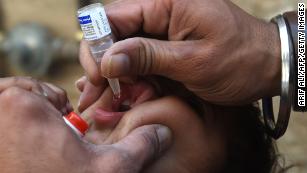
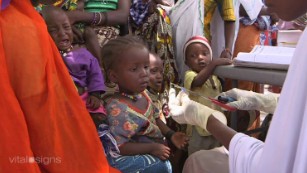
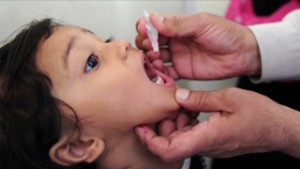
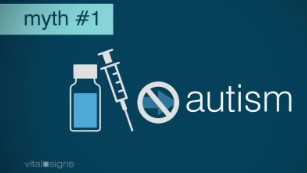

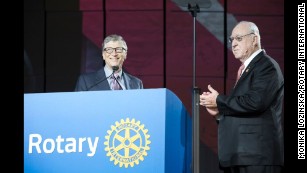
कोई टिप्पणी नहीं:
एक टिप्पणी भेजें